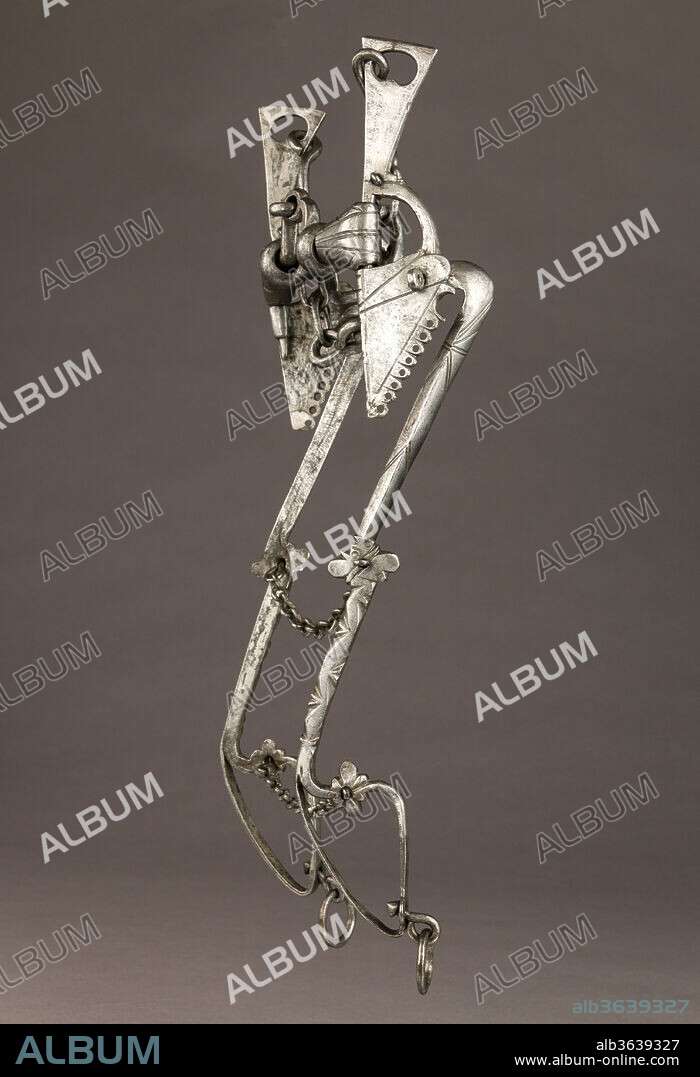alb3639327
Curb Bit

|
Añadir a otro lightbox |
|
Añadir a otro lightbox |



¿Ya tienes cuenta? Iniciar sesión
¿No tienes cuenta? Regístrate
Compra esta imagen

Título:
Curb Bit
Descripción:
Ver traducción automática
Curb Bit. Culture: German. Dimensions: H. 18 in. (45.7 cm); W. 7 in. (17.8 cm); Wt. 3 lb. 1.4 oz. (1400.5 g). Date: 17th century.
According to contemporary equestrian manuals, this was a bit designed for large horses with a hard mouth, a thick tongue, thin lips and non-sensitive bars (part of the horses' jaw without teeth). The gooseneck canons of the mouthpiece were meant to give more freedom to the tongue. The banquets, the parts of the cheekpieces where the mouthpiece is attached, can be opened to switch out the mouthpiece -- a feature particularly appreciated on dressage bits in Germany.
If the very long shanks look impressive, and would logically add more leverage effect, and so more strength, they would actually have been blocked at some point by the horse's chest, reducing their impact. Curb bits were also at this time used with a very light hand, the well-trained horses responding by anticipation to the slightest move of the reins. This bit was very likely used for horse training and dressage.
Técnica/material:
Iron alloy, tin
Museo:
Metropolitan Museum of Art, New York, USA
Crédito:
Album / Metropolitan Museum of Art, NY
Autorizaciones:
Modelo: No - Propiedad: No
¿Preguntas relacionadas con los derechos?
¿Preguntas relacionadas con los derechos?
Tamaño imagen:
3007 x 4400 px | 37.9 MB
Tamaño impresión:
25.5 x 37.3 cm | 10.0 x 14.7 in (300 dpi)
Palabras clave:
 Pinterest
Pinterest Twitter
Twitter Facebook
Facebook Copiar enlace
Copiar enlace Email
Email
